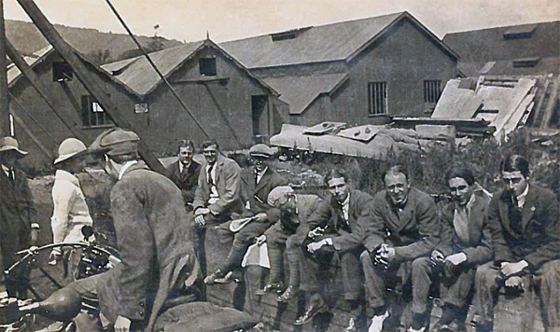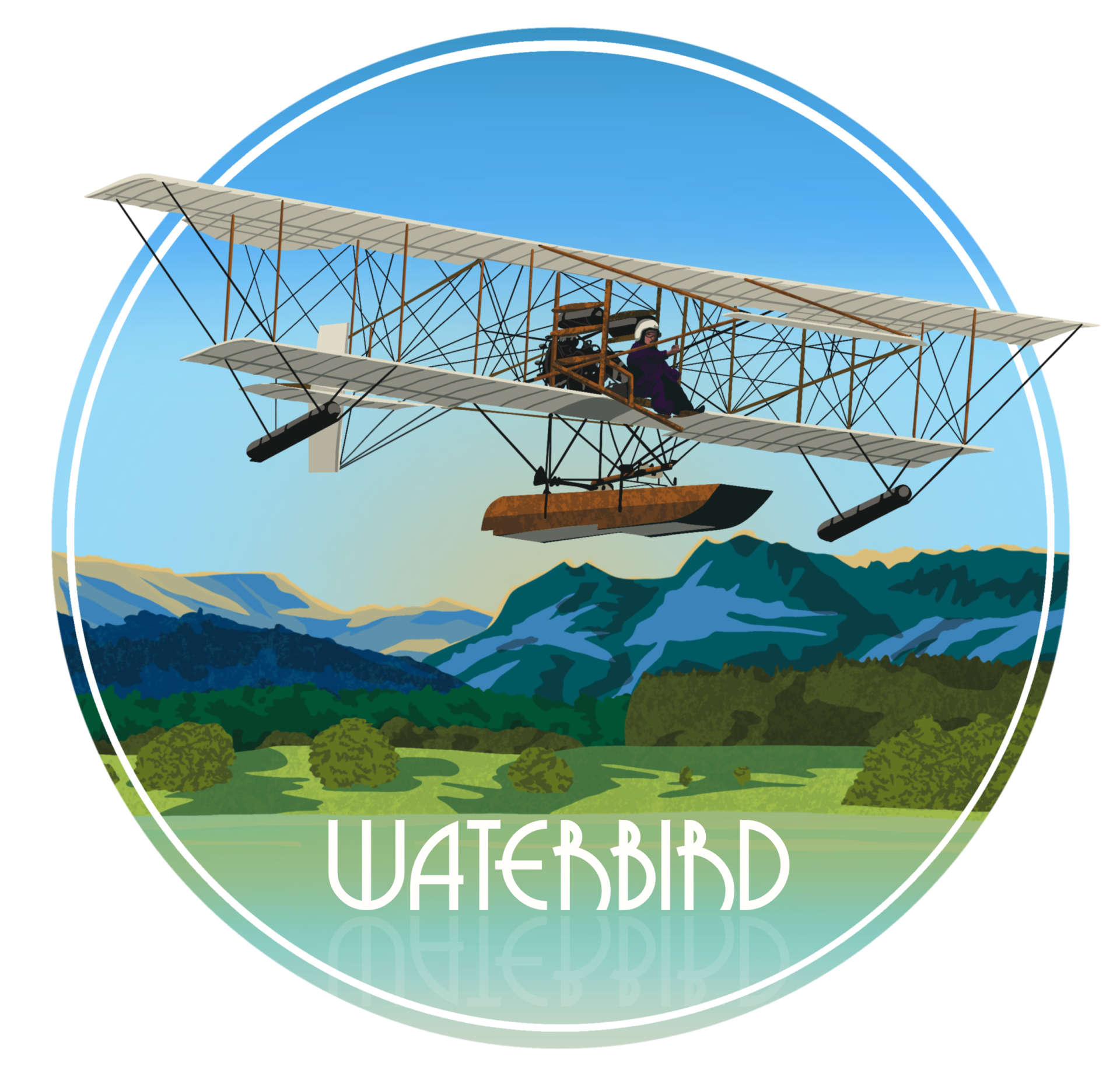
PILOTS AT WINDERMERE
Tribute is paid to the pilots in the above photo, taken in either November or December 1915 at Cockshot.
For Aviators’ Certificates awarded to pilots at Windermere, please click here
Donald Macaskie (on motorcycle), from Laleham, Middlesex, 18, began his training in January 1915, was awarded his Aviator’s Certificate at Windermere on 24 September, and joined the Royal Flying Corps (‘RFC’). Following a ‘Fight with Fokker‘, he carried out a forced landing near Albert during the Battle of the Somme, France on 20 July 1916 resulting in loss of his right leg, then was a Prisoner of War and later repatriated.
Seated from left to right are:-
Gerald Part from Stock Park, Windermere, 21, began in May, joined the Royal Naval Air Service, achieved his Aviator’s Certificate on 24 August 1916 at Royal Naval Air Station Eastbourne
David Robertson from Pollokshields, Glasgow, 22, awarded his Aviator’s Certificate on 12 February 1916 at Windermere and appointed an instructor, joined the RFC, posted to France where he took off in 1917 and was never seen again
Horace Benson from Fleet, Hampshire, 21, arrived in October. Commissioned in the RFC, awarded his Aviator’s Certificate at the Military School, Catterick Bridge on 26 April 1916 and survived the War
Noel Lawton from Endcliffe, Sheffield, 21, was part of the May intake, awarded his Aviator’s Certificate on 18 March 1916 at Windermere, joined the RFC
Arthur Inglis from Glasgow, 23, came in August but was killed in a motorcycle accident in December at Carnforth
Harry Slingsby from Chester, 21, came in March, awarded his Aviator’s Certificate on 4 October at Windermere, gaining some notoriety in 1917 when he wrecked an SE5A by flying into a house whilst landing at night, and in 1918 by firing a Very pistol from his Bristol fighter which landed on a tent containing the Minister for Air
Samuel Sibley from Brighton, 19, came in March, awarded his Aviator’s Certificate on 30 July at Windermere, joined the RFC and became a POW in 1918 after being shot down, ultimately a Squadron Leader
John Lankester Parker from Mildenhall, Suffolk, 19, having been awarded his Aviator’s Certificate at Brooklands on 18 June 1914, started in February, and became an instructor teaching about 75 pupils to fly, achieving over 500 incident-free hours at Windermere. He later became the world’s leading seaplane test pilot for Short Brothers, and in 1942 trialled DP.176 the first Windermere-assembled Sunderland flying boat.
The above photo was taken by Ronald Buck from Heaton Chapel, Stockport, 25, who made his first flight in January, was awarded his Aviator’s Certificate on 7 August at Windermere, joined the RFC, and was posted to France where he was seriously wounded in 1916 being graded ‘permanently unfit for pilot duties’.
The photo at the top of this page is of Royal Naval Air Station Windermere and was taken in 1916. Note the White Ensign flying.
Airmen learning to fly seaplanes at Windermere were described by Clifford Fleming-Williams, ground school instructor and general manager, in an article in the Royal Magazine, January 1916. – ‘Aviators, especially in the fledgling stage, are not down-hearted as a rule; in fact they are usually a lot of harum-scarum young devils, much addicted to high spirits and high-powered motorcycles. They live, move, and have their being in oil-besmeared clothes, astride of something over 7 horse-power.’
– The first British hydro-aeroplane school was set up at Hill of Oaks in 1911. The first British Aviator’s Certificate with the tests taken on a hydro-aeroplane was awarded on 12 November 1912 to John Trotter.

